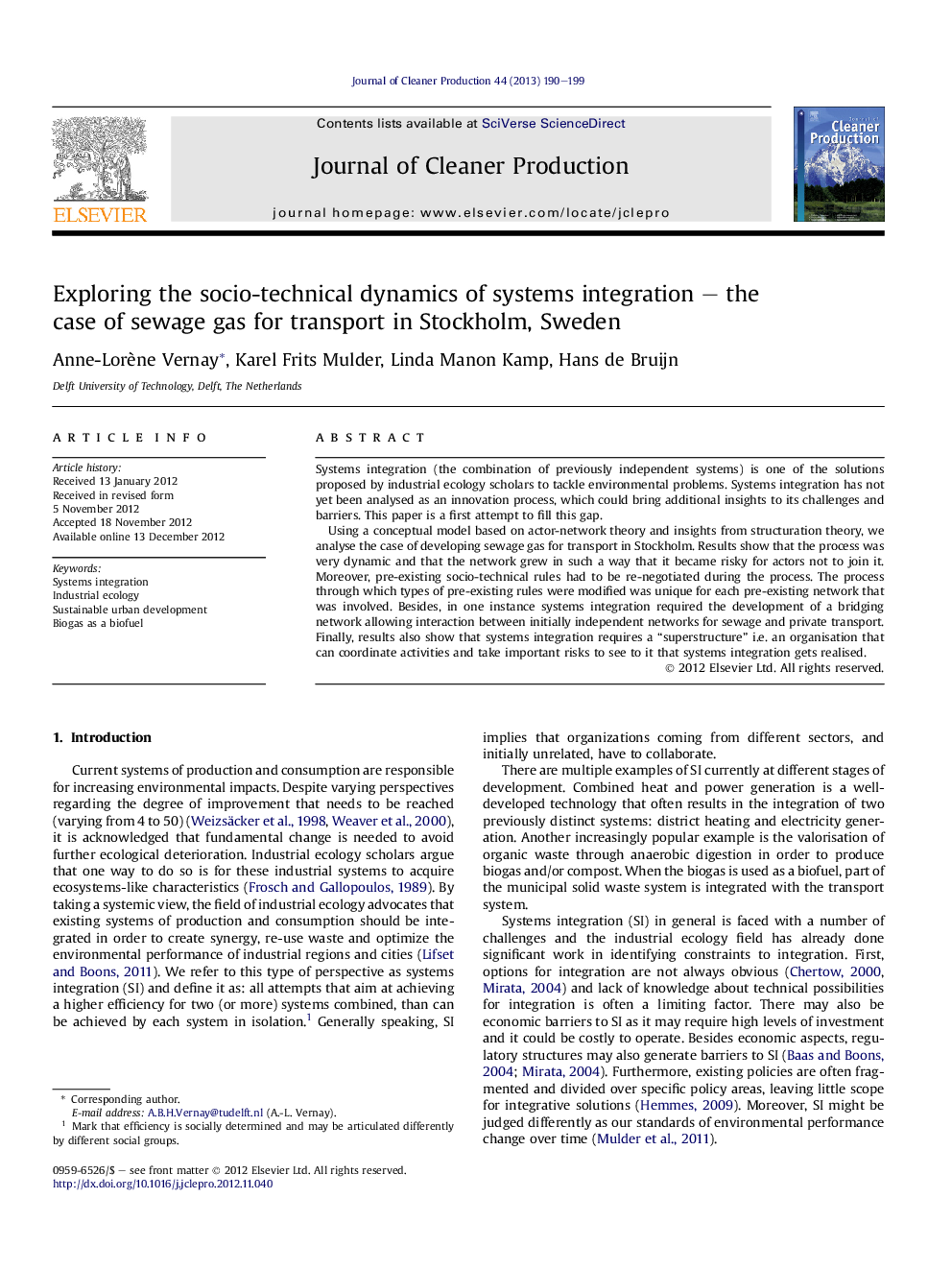| کد مقاله | کد نشریه | سال انتشار | مقاله انگلیسی | نسخه تمام متن |
|---|---|---|---|---|
| 1745575 | 1522202 | 2013 | 10 صفحه PDF | دانلود رایگان |

Systems integration (the combination of previously independent systems) is one of the solutions proposed by industrial ecology scholars to tackle environmental problems. Systems integration has not yet been analysed as an innovation process, which could bring additional insights to its challenges and barriers. This paper is a first attempt to fill this gap.Using a conceptual model based on actor-network theory and insights from structuration theory, we analyse the case of developing sewage gas for transport in Stockholm. Results show that the process was very dynamic and that the network grew in such a way that it became risky for actors not to join it. Moreover, pre-existing socio-technical rules had to be re-negotiated during the process. The process through which types of pre-existing rules were modified was unique for each pre-existing network that was involved. Besides, in one instance systems integration required the development of a bridging network allowing interaction between initially independent networks for sewage and private transport. Finally, results also show that systems integration requires a “superstructure” i.e. an organisation that can coordinate activities and take important risks to see to it that systems integration gets realised.
Journal: Journal of Cleaner Production - Volume 44, April 2013, Pages 190–199